By: Jenise Erwin
Hello Readers!!
Being the last addition to the group it was definitely fate that lead me to become a part of this extraordinary experience. I am deeply honored and forever grateful to the point that words can’t even begin to express the joy I felt when Dr. Cheers notified me that I would be joining the other nine students in this quest through such a monumental period in history. Having a multiracial background has provided me the opportunity to embrace so many cultures, but never have I been given the privilege to step foot on the exact same grounds in which my ancestors made history and lives of African Americans all across America were ultimately changed.
Let me begin by reflecting on day one of our journey which took place on Saturday, January 10th in Memphis, Tennessee. Immediately after arriving at our hotel we were given the opportunity to interview with Rev. Samuel “Billy” Kyles, who witnessed the shot that killed Martin Luther King Jr, and covered his body with a white sheet to shield him from the public. As if it was yesterday, at age 74, Rev. Kyles still vividly remembers this tragedy that occurred on April 4, 1968. Unable to keep my composure any longer, my eyes began to swell up with tears as Rev. Kyles so eloquently described each detail of his experience, including Dr. King’s last sermon known as the “Mountaintop” speech, which ultimately propheticized his fate. According to Kyles, Dr. King specifically says in the sermon that, “I may not get there with you, but I want you to know that we as a people will get to the Promised Land.”
I can’t even imagine how Dr. King felt knowing that he wouldn’t live to witness the dream he fought so diligently to achieve. Given the spiritual insight of knowing that your death is soon to come, how does one even prepare for such a time?
In conclusion, Rev. Kyles left some words of advice for our youth today, which really struck a nerve with me. He mentions that the dream has yet to be achieved and there is still plenty of work to be done, and it’s up to future generations to take full advantage of the opportunities set before us as we are going to be the leaders of the world. He later makes the statement, “Each generation must find their niche and keep the dream alive.”
This experience with Rev. Kyles was astounding and it was an absolute honor to be in the presence of a man who remains the only living person that actually spent the last hour of Dr. King’s life with him. An honor so great, that from the moment he walked through the doors of our hotel, I had to pause and take a deep breath as I was overcome with absolute speechlessness.
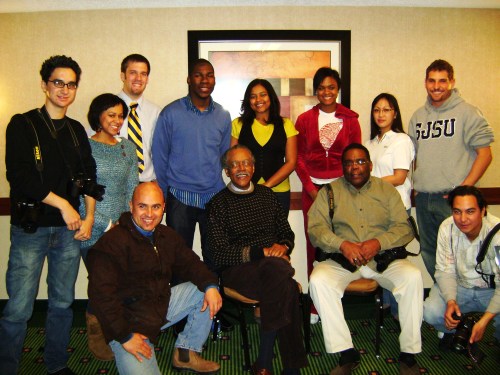
Group photo with Rev. Samuel "Billy" Kyles after our interview. By Jenise Erwin
After the interview, we concluded the evening on Beale Street, and I devoured catfish, hush puppies, and french fries, as I grooved to the beats of classic blues and rock and roll played by a live band. I must say that was about the best catfish I’ve ever tasted!!
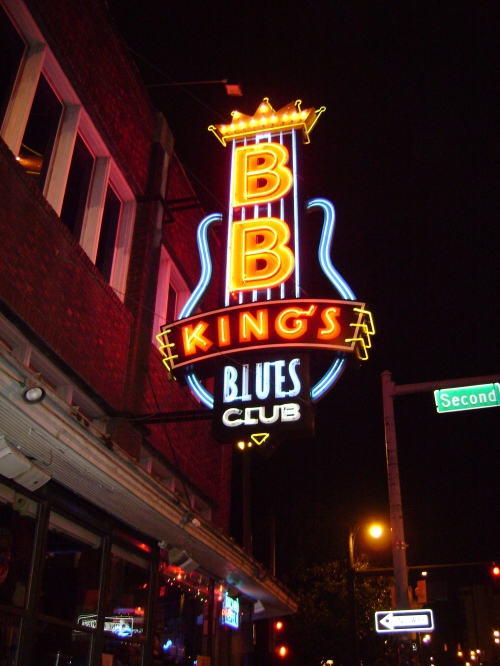
BB King's Blues Club on Beale Street in downtown Memphis. By Jenise Erwin
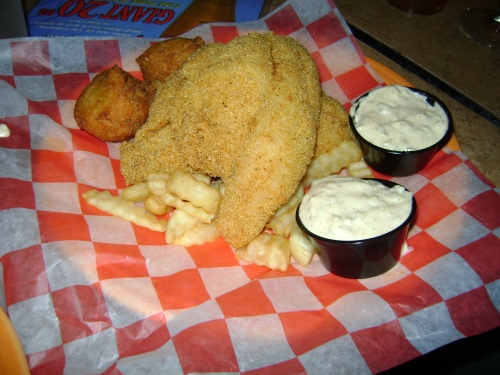
Catfish, Hush Puppies & French Fries at BB King's. Best catfish EVER!! By Jenise Erwin
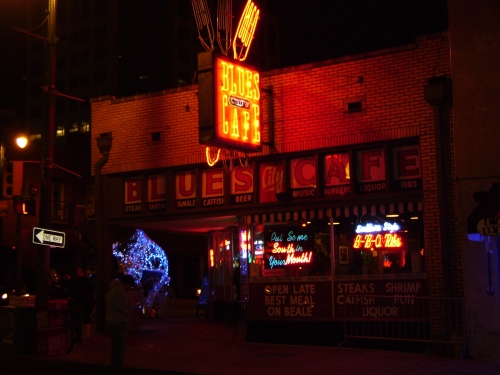
Blues City Cafe on Beale Street. By Jenise Erwin
Day two began with a tour of the National Civil Rights Museum at the site of the Loraine Motel. Eager to step forth in the building I was unpleasantly surprised to notice an African American woman protesting on the corner across from the museum. I wasn’t sure if I was more angered by her refusal to comment on her reasoning for protesting against the museum or if I felt more pity for what appeared to be complete ignorance on her part as far as what the museum embodies. Despite her negative attitude, my experience at the museum was quite intense yet liberating. Walking through this historical timeline of such struggle, hurt and pain, touched a very sensitive spot in my heart but was exactly what I needed to humble me in such a profound way.
As a senior at San Jose State I feel I’ve came such a long way over the last few years, and I’ve struggled to overcome several challenges and obstacles both in my academics and in my personal life. Reflecting on the things that at one point caused me undying stress and turmoil, and seemed almost unbearable, I now realize are extremely trivial and completely insignificant in comparison to the adversity African Americans endured during the civil rights movement. Many people shed blood, lost their lives, and endured constant pain and suffering, in order to have the right to vote, and being that I’m 23 years old, I didn’t even exercise my right to vote until this year’s election. It’s only day two but this experience thus far has allowed me to appreciate life in so many more ways and really want to embrace every single opportunity I’m faced with, with a more open mind and positive attitude.
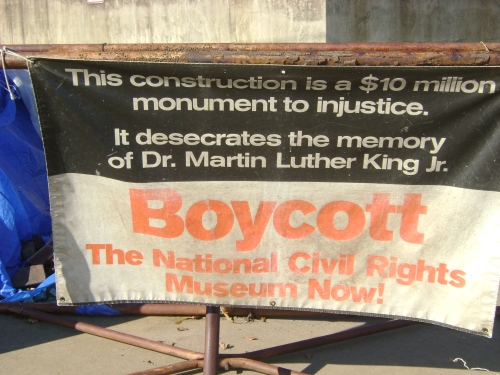
Jacqueline Smith has been protesting the National Civil Rights Museum for 20 yrs and 316 days. By Jenise Erwin
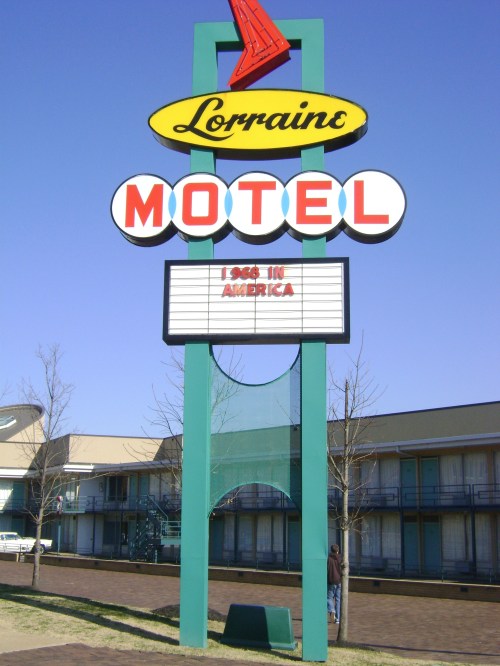
Lorraine Motel is now the site of the National Civil Rights Museum. By Jenise Erwin
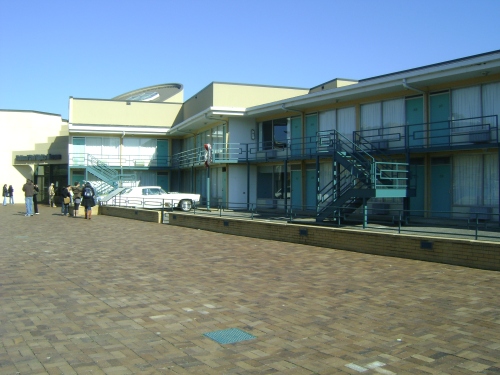
Side shot of balcony of Lorranine Motel where Martin Luther King Jr. was shot and killed. By Jenise Erwin
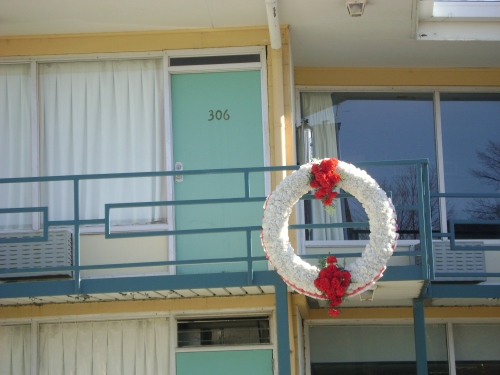
Upclose shot of Room 306, the room where Martin Luther King Jr. spent his final hour with Rev. Ralph Abernathy and Rev. Samuel Kyles. By Jenise Erwin
After the museum, we headed on the road to drive the stretch from Memphis to Mississippi. Upon arrival in Tutwiler, our first stop was the funeral home of which EmmettTill’s body was prepared before it was shipped back to his mother back in Chicago. After the funeral home, we drove alongside the Tallahatchie River where Till’s body was discovered, and followed the highway onto Sumner where we stopped to tour the courthouse that held the 5-day trial that acquitted both Roy Bryant and J.W. Milam for the murder of Emmett Till. Jerome Little, the President of the Tallahatchie Board of Supervisors, was kind enough to guide us throughout the court house and provide us with background info on the case. Little also informed us of future plans that are in progress to restore the courthouse back to the original appearance of what it looked like in 1955. I was pleased to discover that the courthouse will not only remain as a working courthouse but also a museum.
To conclude the Emmett Till experience we visited the grocery store where Emmett Till allegedly whistled at a white woman. During this whole experience I could not help but think that our last four stops all revolved around the brutal murder of a 14 year- old boy who was simply in town visiting his uncle. Although I’m hesitant to mention the word fate, ultimately it was fate that caused the occurrence of such a tragic and unforgettable event in history. According to Jerome Little, Emmett Till was not kidnapped from his uncle’s home until 4 days after the incident with the woman in the grocery store, and during those days in between, Emmett had requested that his cousins who had accompanied him, never mention a word about the incident at the store to his uncle. According to Little, had Till’s cousins said something, Till’s uncle may have sent him back to Chicago immediately, out of fear for Till’s life, and possibly his life may have been spared. With that being said, fate was partly responsible for Emmett Till’s death, and sadly enough, because of it, international coverage was received, and America was finally awakened by the evils of this time and the civil rights movement accelerated.
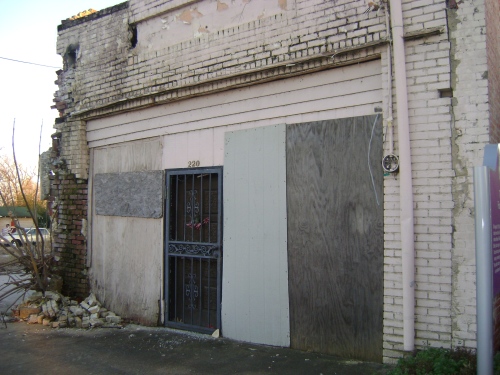
Tutwiler Funeral Home where Emmett Till's body was prepared before it was shipped back to his mother in Chicago. By Jenise Erwin
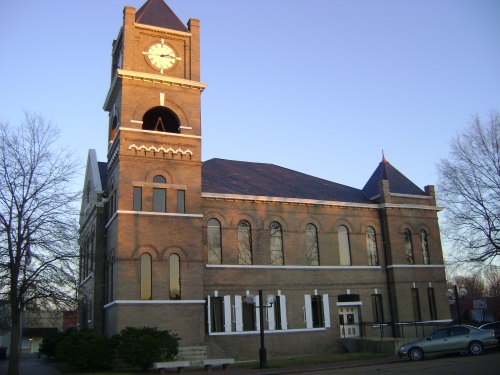
The courthouse in Sumner that held the 5-day trial that acquitted both Roy Bryant and J.W. Milam for the murder of Emmett Till. By Jenise Erwin
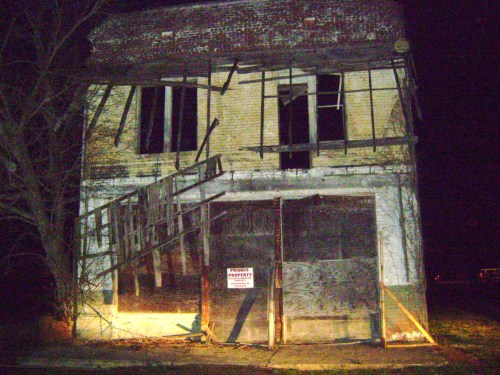
The grocery store in Money, Mississippi where Emmett Till allegedly whistled at a white woman. By Jenise Erwin
Signing off,
Jenise Erwin

These articles are outstanding and I am very pleased that the SJSU students were allowed to participate in such a momentous and historical endeavor. I am especially proud of reading the articles by Jenise Erwin who happens to be my daughter.